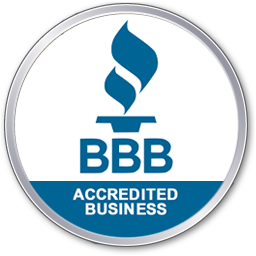There are two main things we’d like to get across about indoor air quality (IAQ) right off the bat.
First, scientific studies have given supporting evidence that indoor air quality can be worse than outdoor air pollution. This can be true in even the largest and most congested cities.
Second, 90% of our time is estimated to be spent indoors, whether it’s at home, at school, in office buildings, or other public spheres. While the reality may seem bleak, the truth is indoor air quality is something we can, in large part, control. It’s about being educated on how to monitor, test, and improve air quality by mitigating or removing indoor pollutants. As of now, there are no national-wide, standard IAQ requirements but companies like us exist to help bridge this gap and promote environmental health.
In this article, we will go over the most common sources of indoor air pollution, which seasons are worse for IAQ, and when to consider getting your air quality screened.
Top 7 Indoor Air Pollutants
There is really no shortage of harmful health effects that can be caused by poor indoor air quality. Poor IAQ has been tied back to heart disease, lung cancer, mesothelioma, and other respiratory diseases such as asthma. These more serious conditions develop over time and under varying levels of concentration. The real risk here is how air quality problems are difficult to detect.
Suffering from milder health problems, such as headaches, nausea, and short-term flu-like symptoms will be more common for most of the pollutants we are going to discuss below.
Asbestos
In July 1989, the EPA (Environmental Protection Agency) banned most asbestos-containing products. But in 1991, this regulation was overturned in a key way – now the 1989 asbestos regulation only banned new uses of asbestos in products that would be initiated for the first time after 1989. Plus, the ban only targeted specific asbestos-containing products: flooring felt, roll board, and corrugated, commercial, or specialty paper.
This means building materials, pre-1989, could still likely maintain asbestos. If undisturbed, asbestos poses little to no threat. But this doesn’t mean having asbestos in your building isn’t a cause for alarm.
Research shows asbestos fibers can cause major breathing problems and cancer. Like many other types of indoor pollution, airborne asbestos fibers have no odor or taste. So, it’s not possible for you to tell whether a material in your home contains asbestos simply by looking at it.
But here are some signs to look out for:
- Disintegrating materials, such as pipes, insulation, walls, tiles, vinyl flooring, and stovetop pads
- Cracks in building materials
- Dusty areas and spots where building material appear to be breaking down
If you notice any of the above in an older building (built in the 1980s or earlier), we recommend you hire a professional to test and see if your building has asbestos.
Removing Asbestos from Your Building
It is always recommended you hire a professional service to remove any asbestos from your building. This is because it’s important to remove asbestos safely to reduce the risk of continued exposure.
Note: Think you may have found asbestos at home or at work? Contact Alpha Environmental for quick and convenient asbestos testing in Portland, Oregon.
Biological Pollutants
Biological contaminants (such as bacteria, viruses, animal dander, house dust, mites, cockroaches, mold, and pollen) are often living organisms. Biological pollutants can travel through the air, can be invisible, and can be easier to reduce from your home than you might think.
While it’s impossible to completely rid a home of bacteria or make your building virus-proof, knowing what causes biological pollutants to thrive is the first step to improving your indoor air quality
Biological pollutants require nutrients and moisture to thrive. Think of the parts of your building that come in contact with water, such as bathrooms, large appliances (dishwashers, refrigerators, hot water heaters, washing machines, air conditioners).
To reduce biological pollutants, we recommend you:
- Clean regularly (vacuum carpets to remove house dust build-up, wipe down countertops, and mop floors).
- Check to make sure there isn’t moisture build-up near appliances that use water.
- Regularly change out air filters in A/C units and any air purifiers being used.
- Replace shower curtains annually (or if you ever notice mold build-up).
Note: Think you may have found mold at home or at work? Contact Alpha Environmental for quick and convenient asbestos testing in Portland, Oregon.
Carbon Monoxide (CO)
Odorless, colorless, and toxic, carbon monoxide is the definition of a silent killer. While the health effects of CO exposure vary greatly and depend on factors, such as age, overall health, and the concentration and length of exposure, the CDC reports that over 10,000 people are poisoned by carbon monoxide each year.
This could be why so many states (as listed below) have begun to require carbon monoxide detectors to be installed in homes, schools, and hotels & motels.
Common Sources of Carbon Monoxide
Carbon monoxide can come from direct or secondhand smoke, gas stoves, leaking chimneys and furnaces, and car exhaust from attached garages
Side Effects of Carbon Monoxide Poisoning
Depending on the intensity (and length of exposure), people who have carbon monoxide poisoning have reported:
- Fatigue
- Chest Pain
- Angina
- Impaired Vision
- Impaired cognitive function
- Headaches
- Dizziness, nausea and general confusion
- Flu-like symptoms that only stick around for as long as you’re in the building.
Carbon Monoxide Detector Requirements by State
| Home Requirements | School Requirements | Hotel/Motel Requirements |
| Alaska, District of Columbia, California, Colorado, Connecticut, Georgia, Florida, Illinois, Iowa, Maine, Maryland, Massachusetts, Michigan, Minnesota, Nebraska, New Hampshire, New Jersey, New York, North Carolina, Oregon, Pennsylvania, Utah, Rhode Island, Tennessee, Vermont, Washington, West Virginia, and Wisconsin. | California, Maine, Connecticut, Illinois, and Maryland | New Jersey, Louisiana, Vermont, California, Maine, Michigan, Oregon, Tennessee, West Virginia, and Wisconsin |
Formaldehyde
Formaldehyde is a commonly used chemical in manufacturing building materials and numerous household products.
When you burn things like natural gas, wood, gasoline, and tobacco, formaldehyde gas gets released into the air. In most homes, formaldehyde is emitted from pressed wood products like particleboard, plywood paneling, and MDF (medium-density fiberboard). Other sources include foam insulation, carpets, glues, cigarettes, and unvented, fuel-burning appliances like gas stoves or kerosene heaters.
Too much formaldehyde can irritate skin, eyes, nose, and throat. High levels of exposure can even cause some types of cancers and trigger asthma attacks.
Unlike other pollutants on our list, you can use a home kit (available in stores and through Amazon) to test for formaldehyde. However, these tests are limited and conducting more broad indoor quality tests can also look for mold and other pollutants in addition to formaldehyde.
Nitrogen Dioxide (NO2)
The most common indoor sources of nitrogen dioxide include tobacco smoke and gas appliances.
Nitrogen Dioxide acts as an irritant affecting the mucosa of the eyes, nose, throat and respiratory tract. Continued exposure to high NO2 levels can contribute to the development of acute or chronic bronchitis.
Tips to Reduce Indoor Nitrogen Dioxide Levels
- Use an exhaust fan vented to the outdoors over your gas stove.
- Make sure your flue is open when using your fireplace.
- Only choose woodstoves that are EPA certified. Plus, make sure that doors on all woodstoves close tightly.
- Have a professional do annual inspections and tune-ups on central heating system, such as furnaces, flues, and chimneys.
Radon Gas (Rn)
A colorless, odorless radioactive gas, Radon is naturally in the atmosphere and, in these small trace amounts, practically harmless. But when radon exposure comes from the indoors, there are serious health risks. Radon exposure is the second leading cause of lung cancer in the United States (and is the leading cause for non-smokers).
Fortunately, you can take steps to reduce radon levels in your home.
First, have your home tested by a professional. They will test if radon levels are high. And, if needed they can perform radon mitigation services.
We recommend testing for radon anytime you buy a new home.
Note: Portland has some of the highest levels of radon risk in the state of Oregon. Contact Alpha Environmental for short-term and long-term radon testing, and radon mitigation services.
Volatile Organic Compounds (VOCs)
VOCs are emitted as gases from certain solids or liquids and include a variety of chemicals, some of which have short and long-term adverse health effects.
Here is a non-exhaustive list of household products containing VOCs: paints and varnishes, aerosol sprays, cleaning products and disinfectants, air fresheners, and pesticides.
In the office and at school, you can find VOCs in building materials, copiers and printers, glues and other adhesives, and permanent markers.
To reduce VOCs in the home, it’s best to be proactive. Try not to use products that release VOCs into your living quarters. If this isn’t possible, then make sure the room is ventilated (open a window, get an air purifier, turn on the fan) to help push the VOCs out of your home.
Which Seasons Are Worse for Indoor Air Pollution?
One of the biggest contributing factors to your indoor environment is outdoor weather, mainly: what season is it? What’s the temperature? What’s the humidity level?
During the warmer seasons (spring and summer), the concern is what you’re letting indoors. During the colder seasons (fall and winter), the concern is what you’re not letting out.
- Spring: Otherwise known as allergy season. You’re more likely to leave the windows open. Pollen and other allergens (dust mites and pet dander) are more likely to get inside your home. Clean surfaces regularly to prevent build-up.
- Summer: Summer showers rain can increase humidity and mildew, which can affect your indoor air quality and air filters. Plus, high temperatures can also exacerbate allergies.
- Fall: As temperatures cool, indoor pollution often increases. Think about it. Not only are you inside more often, but you’re also more likely to keep windows closed. Fall is also cold and flu season and a time for people to buy season candles. When the leaves start to turn, that is your signal to replace air filters, perhaps invest in an air purifier, and increase how many times a month you vacuum and dust.
- Winter: Most people seal off their homes during the winter (and turn on their heaters). You’ll want to keep your air fresh with proper ventilation. Plus, we recommend regular house cleaning (including dusting and vacuuming). You can also consider buying an air purifier though keep in mind they generally only work for smaller rooms, so most homes will need more than one.
When To Get Your Air Quality Screened
After reading this list, it makes sense if you want to get your indoor air quality screened. The good news, as we said in the beginning, is that tests are readily available and IAQ can be improved.
- If you’re still not sure if you need your air quality screened, use these red flags as indicators:
- Do you live in an older home?
- Do you live in a zip code known for a specific pollutant?
- Are you experiencing headaches or flu-like symptoms when indoors?
- Has any part of your home recently experienced increased humidity or dampness?
- Do you regularly use gas appliances or wood-burning stoves?
Note: If you live in the Portland, Oregon area, Alpha Environmental conducts indoor air quality screening that specifically tests for carbon monoxide, carbon dioxide, VOCs, particulate matter, and asthma triggers.




